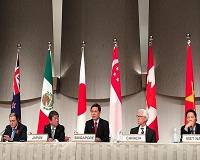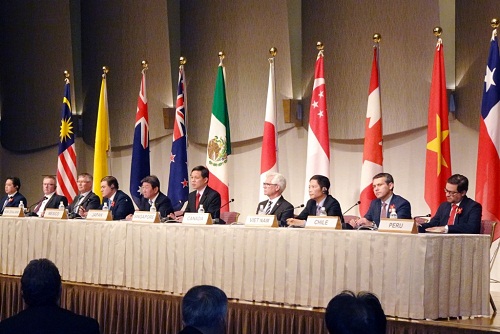"The anticipated impact of the CPTPP will be immense, as slashed tariffs encourage significant shifts in global supply chains. Its high-standard provisions on the digital economy, investment, financial services, labor and the environment establish new "rules of the road" that will have a broad country-specific and collective impact. CPTPP includes high-standard chapters covering customs and trade facilitation, standards and technical barriers to trade, investment, services, intellectual property, e-commerce, government procurement, SOEs; labor, environment, regulatory coherence, transparency and more."
 The anticipated impact of the CPTPP will be immense, as slashed tariffs encourage significant shifts in global supply chains. Its high-standard provisions on the digital economy, investment, financial services, labor and the environment establish new "rules of the road" that will have a broad country-specific and collective impact. CPTPP includes high-standard chapters covering customs and trade facilitation, standards and technical barriers to trade, investment, services, intellectual property, e-commerce, government procurement, SOEs; labor, environment, regulatory coherence, transparency and more.
The anticipated impact of the CPTPP will be immense, as slashed tariffs encourage significant shifts in global supply chains. Its high-standard provisions on the digital economy, investment, financial services, labor and the environment establish new "rules of the road" that will have a broad country-specific and collective impact. CPTPP includes high-standard chapters covering customs and trade facilitation, standards and technical barriers to trade, investment, services, intellectual property, e-commerce, government procurement, SOEs; labor, environment, regulatory coherence, transparency and more.
Impact on various countries
As the CPTPP opens new markets and, in some cases, imposes new rules on domestic treatment of data, intellectual property, labor rights, and more, each country has a unique set of economic and political circumstances to consider. Some of these impacts on the following countries will include:
Australia: The CPTPP will help support Australian businesses to grow and see annual benefits of up to [AUD]$15.6 billion to the national economy by 2030. However, despite these anticipated benefits, some economists estimate the ultimate real national income boost to be just 0.5 percent by 2030—the lowest of all Parties..
the national economy by 2030. However, despite these anticipated benefits, some economists estimate the ultimate real national income boost to be just 0.5 percent by 2030—the lowest of all Parties..
Canada: The CPTPP represents a significant opportunity for Canada to diversify its trade links and build stronger export markets in Asia. The country’s food and agriculture industry in particular is poised to benefit, gaining preferential access where it currently faces high tariffs, such as in Japan, Vietnam and Malaysia. Overall, Canada's GDP gains are estimated at $4.2 billion, higher than under the TPP, because it is no longer competing with the United States under the same agreement.
Japan: The CPTPP serves to set a floor for the anticipated US-Japan FTA negotiations, and could also give Japan leverage in the midst of other ongoing negotiations, including those for the Regional Comprehensive Economic Partnership (RCEP).
Mexico: The CPTPP allows Mexico to have FTAs with six additional Asia-Pacific nations, including Australia, Brunei Darussalam, Malaysia, New Zealand, Singapore and Vietnam. Its transparent membership process could allow Mexico to exploit new trade and investment relationships with other Asian countries and Latin American neighbors. Mexico will benefit not only from non-tariff barriers with its CPTPP partners, but also from wide treaty coverage and strict protections in several areas, such as digital trade, regulatory coherence, intellectual property rights (IPR), SOEs, services, labor and environment, transparency and corruption.
Other countries, including Colombia, Indonesia, the Philippines, South Korea, Taiwan, Thailand, and the United Kingdom, have indicated varying degrees of interest in joining the Agreement.
US to rejoin agreement
Following the US midterm elections on November 6, 2018, where Democrats attained a majority in the House of Representatives, it is possible that trade policy priorities will shift slightly. However, the speed with which the United States could potentially join the CPTPP, seek to improve the agreement, or consider other options would depend on the terms and conditions of its accession.
Using the agreement to mitigate economic impact
With the US-China trade war escalating, some CPTPP members may use the agreement to mitigate some potential economic impact. For example, Vietnam's economy is highly dependent on exports, a quarter of which go to China. Demand may slip, especially for those goods which are re- exported to the United States. The CPTPP, then, will open up new export markets and other opportunities.












